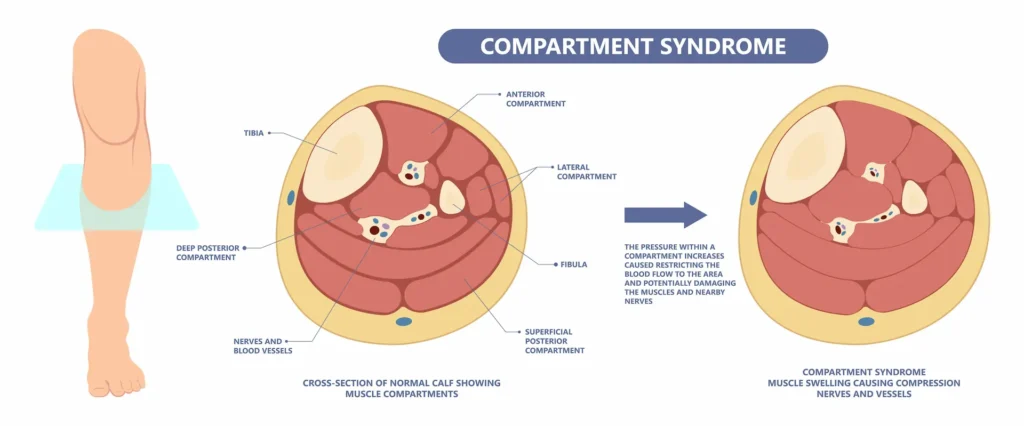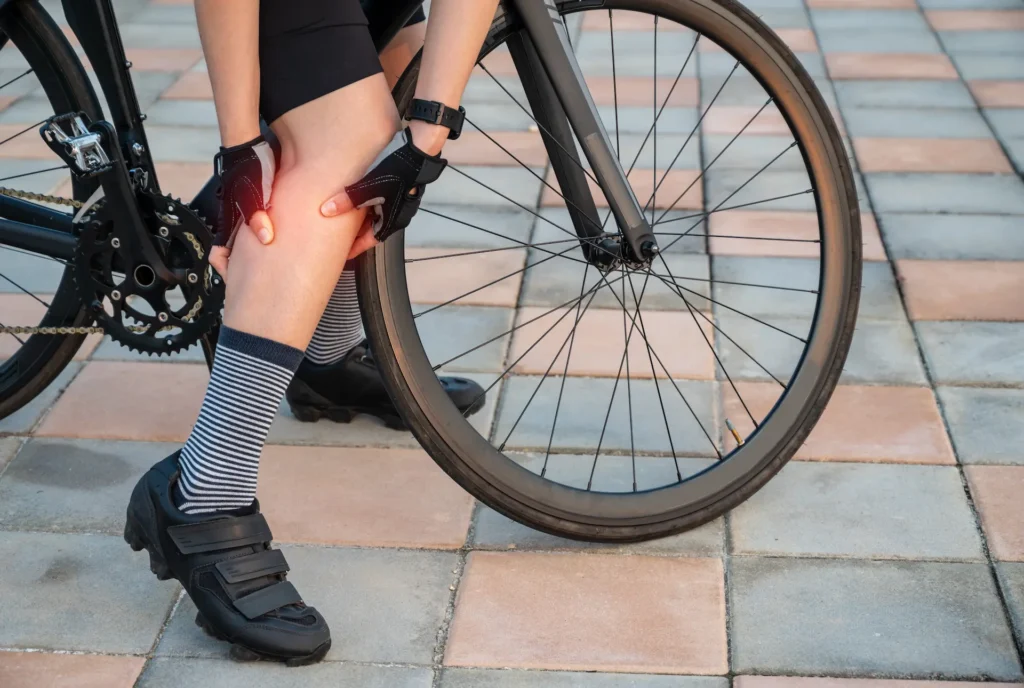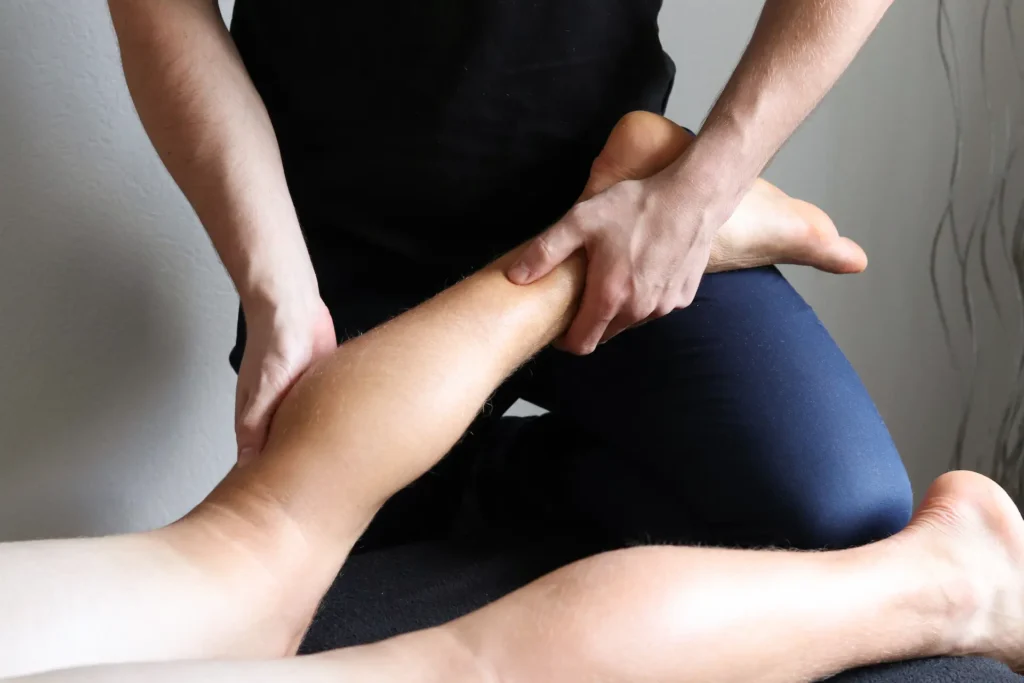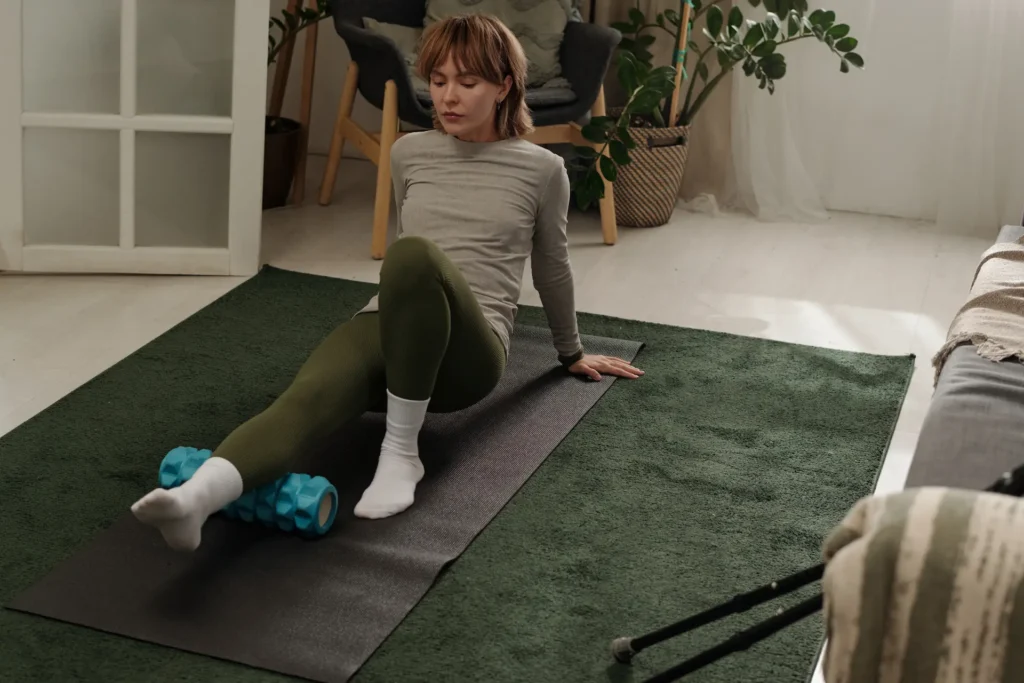Do your legs feel like they’re going to burst during exercise? Or maybe you experience severe cramping that doesn’t go away with rest? These could be signs of compartment syndrome – a painful condition where pressure builds up inside your muscles.

Your muscles are organized into groups, each wrapped in a tough tissue covering (called fascia). These wrapped muscle groups are called compartments. Inside each compartment are muscles, nerves, and blood vessels. When too much pressure builds up inside, it’s like a balloon being overinflated – the pressure starts affecting blood flow and nerve function, causing pain and limiting movement.
Think of your muscles as being organized into separate compartments, like rooms in a house. Each compartment is wrapped in a tough, connective tissue called fascia. Inside these compartments are muscles, nerves, and blood vessels. When pressure builds up inside these compartments, it’s like too many people trying to squeeze into an elevator – there’s not enough space, and things start to get uncomfortable.
This pressure buildup can:
Compartment syndrome most commonly affects:

Chronic Compartment Syndrome This is the most common type we see in our practice. During exercise, your muscles naturally swell with increased blood flow. But in some people, the compartment doesn’t have enough room for this swelling. This causes pain and tightness that:
Many runners, cyclists, and athletes experience this type.
Common causes include:
This is a serious condition that needs immediate medical attention. It happens when there’s sudden trauma or injury that causes rapid swelling inside a muscle compartment. Unlike chronic compartment syndrome, the pain:
This can happen after:
Now that you understand the different types of compartment syndrome, let’s look at the warning signs that might indicate you’re dealing with this condition.

PLEASE CHOOSE ONE ^
One of my clients, a college soccer player, struggled with shin pain for months until we started myofascial release treatment. This gentle but effective technique helps:
Cupping is like a vacuum for your muscles. It lifts tissue up and out, creating space where things are too tight. It helps:
Those tight, painful knots that develop around affected areas? That’s where trigger point therapy comes in. We focus on specific tight spots to:
Proper stretching is crucial, but it needs to be done right. We’ll show you:

I always tell my clients that what they do between sessions is just as important as the treatment itself. Here’s what works:
Many people wonder what results they might expect. Here’s a recent example from our practice:
Max, a young athlete, came to us struggling with constant tightness and pain in his lower leg, ankle, and foot. Like many active people, these symptoms were affecting his performance and enjoyment of sports.
During his assessment, I found what I suspected – the fascia (that tough tissue covering I mentioned earlier) from his knee down to his foot was severely restricted. This was limiting his ankle and foot movement – classic signs of compartment syndrome.
We started treatment right away. First, I applied heat to warm up the tissues, making them more responsive to therapy. Then I used gentle but effective myofascial release techniques to break up the adhesions throughout his leg and foot.
The results? After just one session, Max walked out with no pain and dramatically improved movement in his ankle and foot. He was back to training within days, amazed at how much difference proper bodywork could make.

Living with compartment syndrome doesn’t mean giving up the activities you love. With proper bodywork therapy and self-care, many of our clients return to their favorite sports and activities pain-free. The key is starting treatment early and staying consistent with your care plan.
At Bodywork Masters, we’ve helped many people find relief from compartment syndrome without surgery. Our experienced therapists will create a personalized treatment plan using proven bodywork techniques to help reduce your pain and get you moving again.
Don’t let pain hold you back any longer. Schedule a session today. Let’s get you back to doing what you love.